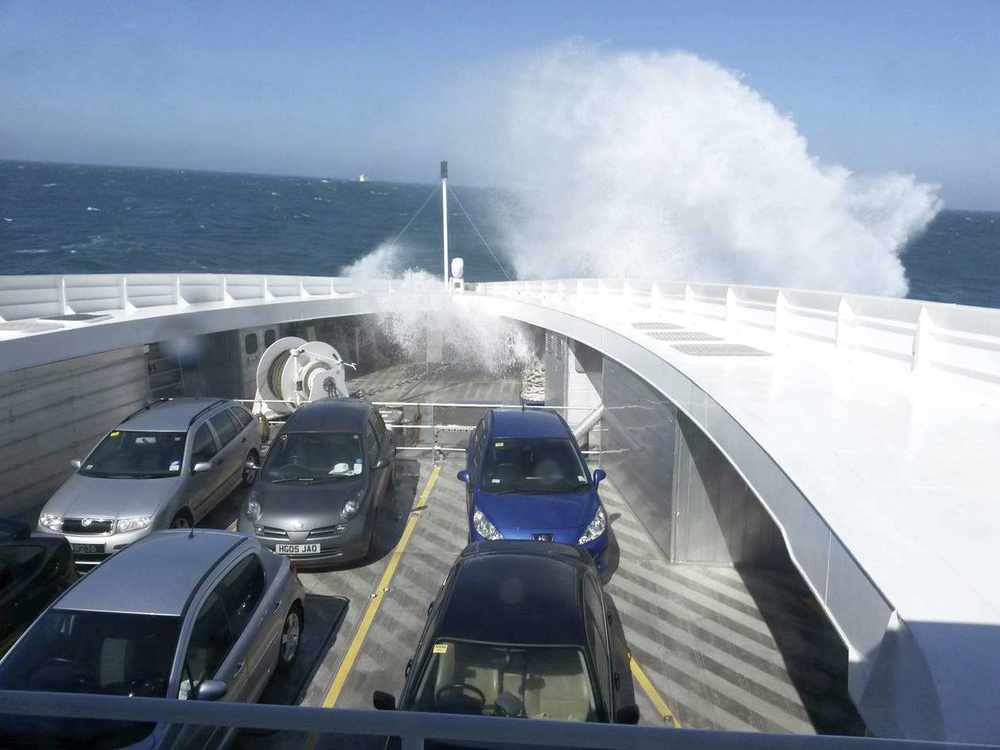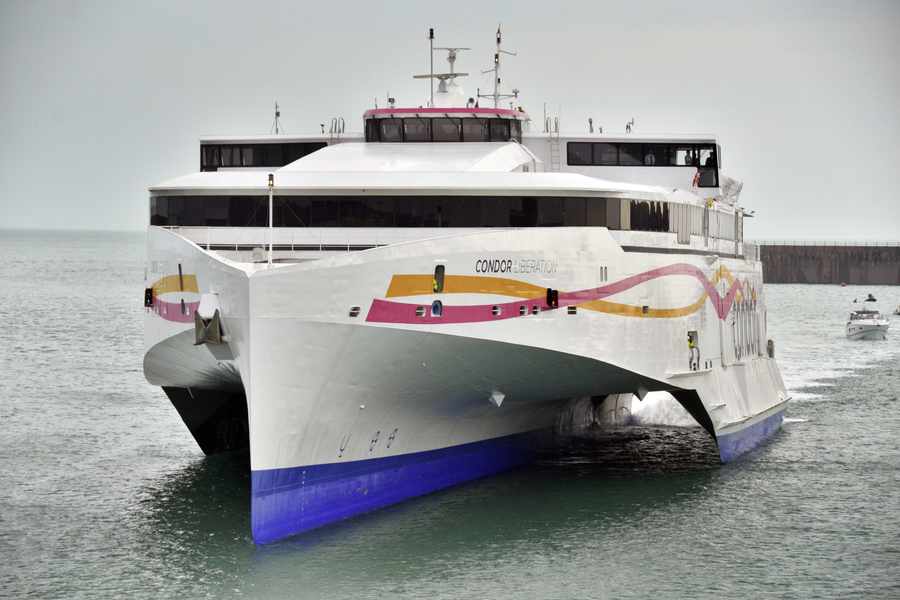- Condor Ferries has assured passengers that the Condor Liberation is designed to tilt out of the water during rough seas
- Some passengers had expressed fears after seeing the ferry sides rise out of the sea
- Watch: One passenger filmed the Liberation tilting to one side during Monday’s crossing
- Which is worse – a rough sea crossing or a turbulent flight? Take our poll below
THE sides of the Liberation fast ferry are designed to leave the water during rough crossings, Condor have said after a passenger raised safety concerns following a recent journey.

Kirsty Good, who was travelling with her fiancé and two young children, said that the ‘left side of the boat was out of the water’ at times during a crossing from Jersey to Poole this week and she was worried it could ‘tip over’.

- Condor Liberation is the companys 16th passenger vessel since it was founded in 1964
- It has a service speed of 35 knots (about 40 mph), which is faster than a great white shark, and its engines have equivalent power of 50 F1 cars
- There are 33 staff working on the ship on each sailing
- On its maiden voyage from Cebu in the Philippines to Poole, Condor Liberation sailed more than 10,000 nautical miles
- Each year Condor Ferries carries more than one million passengers and 200,000 passenger vehicles
Her fiancé, Matthew Godfrey, added: ‘We encountered some quite rough weather and had taken a couple of hits from some rather large waves which caused the boat on more than one occasion to list to its starboard side.
Condor have confirmed that the wave heights were within the vessel’s limits and said that passengers should not be concerned if the sides of the vessel leave the water.
Captain Fran Collins, executive director for operations, said: ‘Although there was considerable discomfort for passengers, the ferry operated safely throughout the crossing.
‘These stabilisers do have a much lower draft than the hull and are designed to leave the water in certain conditions.
‘When our vessels do experience rough seas, it is normal practice to ask passengers to remain in their seats and for the crew to close the retail outlets.
‘This is similar to when air passengers are asked to do the same when experiencing turbulence while flying.’






